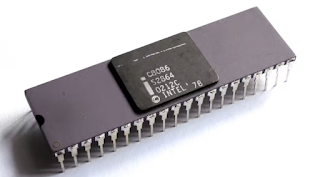With a Raspberry Pi and the 8086 HAT, you can run Intel 8086 CPU-compatible applications.
With a quad-core Cortex-A72 CPU operating at 1.5 GHz and up to 8 GB of RAM, the Raspberry Pi 4 is a beast among single-board computers. Even still, many of us find ourselves in circumstances when we require more authority than we have. Engineer Robin Grosset evidently experienced this suffering firsthand, so he created a Raspberry Pi HAT with a coprocessor that can give the board the extra vigor it needs to tackle the tougher tasks you throw at it.
To be clear, when I say difficult tasks, I don't mean tasks that aren't in the least bit challenging. The Intel 8086 CPU, which was initially released in 1978, is the processor Grosset has added to the Raspberry Pi. It's far from a current powerhouse, but it's essentially identical to the beloved 8088 processor featured in the very first IBM Personal Computer, and it was also the first chip to adopt the x86 instruction set architecture, which is still in widespread use today.
The 8086 PDIP package, like many other processors of the time, contains pins allowing the processor to define address locations that it needs to read from or write to, as well as numerous additional control lines. A 16-bit wide data bus connects the processor to various peripherals (such as RAM, ROM, and audio/video processors). The values on the address bus may then be read and interpreted in the context of the status of the other control pin values to identify what state the CPU is in by feeding the clock signal using a GPIO pin on the Raspberry Pi.
To emulate peripheral devices, an appropriate signal may be applied to the data lines (or read from them) using the Raspberry Pi GPIO pins. Grosset was able to transfer the 8086 program instructions as well as imitate an external RAM chip in this fashion.
A custom terminal programme running on the Raspberry Pi was used to demonstrate the HAT running MS-DOS Version 6.22. It isn't very fast, with an estimated working speed of around 0.3 MHz, which may be an overestimate considering the sluggish pace at which a directory listing was printed in the demonstration video. With a CGA/VGA graphics emulation in the works for the HAT, more vintage fun may be accessible in the future. If the effort succeeds, it will be able to play Zork or Defender on original hardware, albeit at a snail's pace (the 8086 was commonly clocked between 5 and 16 MHz in computers at the time).
If you're interested in retro computing or computer engineering, check out Grosset's work on Github, which is licenced under the GPL 3.0 licence. If you don't already have an 8086 CPU or a pin-compatible processor like the NEC V30, you may still get one for a reasonable price through online merchants and auction sites.

















.png)




